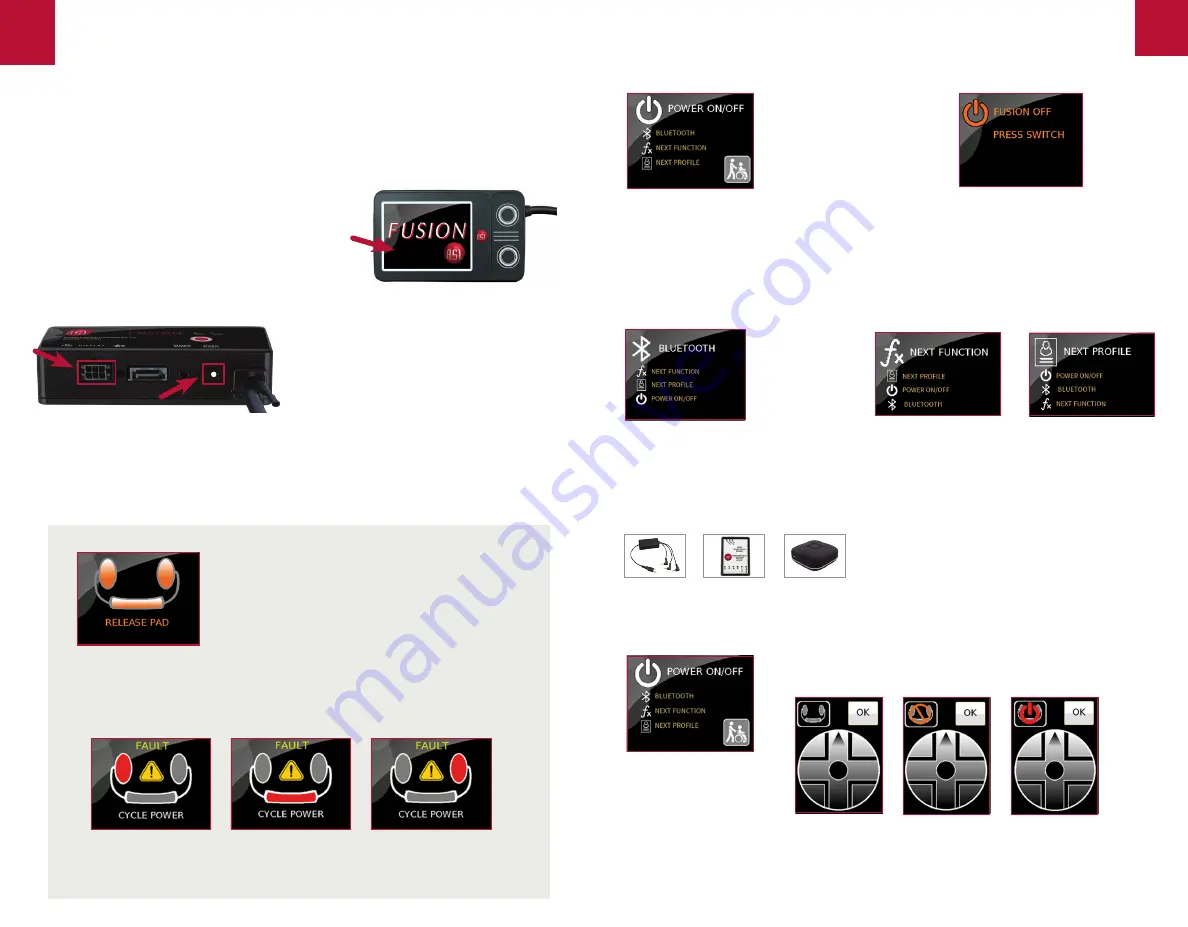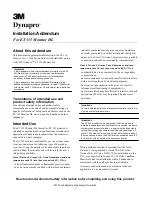
DISPLAY MENU
When the user taps the Attendant
Control icon, the Programmer
will display the Attendant Control
screen.
When the Display is showing
the full screen Attendant option,
the Attendant Control is active.
MAIN USER -
ATTENDANT CONTROL
When the Attendant Control is turned on and pressed, the following screen is displayed.
* See
Understanding the Attendant Control
section for more information.
Left:
Attendant and Head Array are active.
Center:
Attendant is active, Head Array is inactive.
Right:
FUSION is powered off. Attendant is active and Head Array is off.
When Next Function is highlighted,
a momentary switch activation
will move through the functions
programmed within a profile.
MAIN USER -
NEXT FUNCTION
When Next Profile is highlighted a
momentary switch activation will
move through the profiles that are
turned on in the chair.
MAIN USER -
NEXT PROFILE
557-3 Bluetooth
Switch Interface
558 Mouse Emulator
545 Tecla E
In Bluetooth Mode, the FUSION will connect to three (3)
ASL Accessories, one at a time, shown below :
MAIN USER -
BLUETOOTH
Once in the Bluetooth Mode, the FUSION will automatically
connect to the selected powered receiver and the FUSION
Head Array will be the activation for that accessory.
When the Power On/Off is highlighted a
momentary switch activation will turn the FUSION
off and on. When the FUSION is Off, the screen
will change color to indicate the Head Array
is off and will not react to any pad activation.
POWER OFF
When the patient holds the switch to the adjusted time, the system will
move to the next line item in the FUSION display. When the same switch
is then activated in a momentary activation, it will activate that selection.
MAIN USER
T
he Main User Screen shows all the features
available on the FUSION. When a switch is
plugged into the User Port of the FUSION
interface, a momentary activation of the
switch will activate the highlighted top
selection.
EXPLANATION OF PARTS
FUSION 165 DISPL AY, PROGRAMMER AND AT TENDANT CONTROL
The ASL 165 FUSION Display, Programmer and Attendant Control has multiple features. It can be used to
personalize the FUSION to the specific patients’ needs. It can also be used as a display, so the patient will
know what they are controlling, such as:
Bluetooth, Next Function, Next Profile,
and
On/Off
of the Head
Array. In addition, the 165 FUSION can be used as an Attendant Control which works in conjunction with,
or can take over, the FUSION Drive Control.
CONNECTION PORT
USER PORT
When a switch is plugged into the User Port if the
FUSION Interface, a momentary activation of the
switch will activate the highlighted top selection. As
the patient holds the switch to the adjusted time, the
system will move to the next line item that is turned on
in the FUSION display.
An auditory tone will be heard:
One (1) beep for
On/Off,
two (2) beeps for
Bluetooth
,
three (3) beeps for
Next
Function
and four (4) beeps for
Next Profile.
When R-Net is enabled, the auditory cues are:
One (1) beep for
On/
Off,
two (2) beeps for
Bluetooth
,
three (3) beeps for
Toggle/Forward Reverse
, and four (4) beeps for
User Menu
and five (5) beeps for
Seating
.
The
Startup Screen
appears while the system is
booting up for 2 seconds.
During the startup process,
the system is running a diagnostic test, if there are
any errors a fault screen will appear. After the start
up system check is complete (without fault), the
Main User Menu will show on the screen.
START
SCREEN
The
Out of Neutral
Screen will appear if any of the pads are
activated while the FUSION is powering up and when power
up idle is off. As a safety precaution, it will instruct the user
to move away from the activated pad.
When this occurs, cycle power on the wheelchair and resume normal operation. If the
problem persists, contact ASL or the provider.
OUT OF NEUTRAL
Left Pad Fault
Center Pad Fault
Right Pad Fault
The
Fault Screen
will be shown if the system detects a faulty pad. The faulty pad is shown
in red as depicted in the following screens indicating a
Left Pad Fault
, a
Center Pad Fault
and
a
Right Pad Fault
. It is possible to indicate multiple pad faults.
FAULT SCREENS:

























